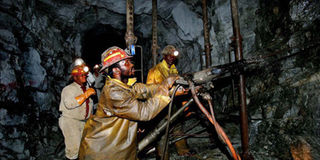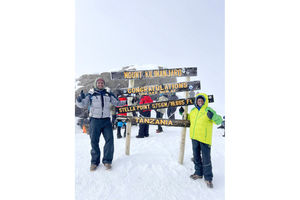Africa’s mining sector meets amid commodity price uptick

What you need to know:
- The annual four-day Mining Indaba in Cape Town takes place as demand in China, one of the world’s biggest consumers, begins to stabilise. Commodities like iron, copper and tin are soaring to new heights, raising hope among analysts that this year’s conference may spur funding for new mining ventures.
Cape Town. Investors and mining firms gather today at Africa’s biggest industry conference amid a newfound optimism that the uptick in commodity prices could shore up investment after years of downturn.
The annual four-day Mining Indaba in Cape Town takes place as demand in China, one of the world’s biggest consumers, begins to stabilise. Commodities like iron, copper and tin are soaring to new heights, raising hope among analysts that this year’s conference may spur funding for new mining ventures.
“A lot of these prices are up 100 percent from what they were a year before, some only fifty percent, but some three or four hundred percent, so this should be the biggest Indaba we’ve seen in a couple (of) years,” said Peter Major, mining analyst at Cadiz Corporate Solutions. The devastating price slump saw several commodity-dependent economies across Africa stagnate, with companies cutting jobs and some shutting down operations.
Africa’s biggest copper producers Zambia and the Democratic Republic of Congo (DRC) were among the worst hit, with thousand of jobs lost over the last three years.
The jobs bloodbath also hit South Africa, the continent’s most diversified economy which is battling poor growth. The World Bank’s latest commodities forecast, however, confirms the worst is finally over, with prices on a solid climb thanks to strong Chinese demand and a tightening supply. Copper prices jumped 10 percent in the last quarter of 2016, “the first double-digit quarterly gain in nearly five years”, the report said.
The bank is now projecting metals prices to rise by 11 percent in 2017, a significant improvement from an earlier forecast of just 4 per cent.
US boost?
“Policy efforts by China to boost commodity-intensive infrastructure and construction sectors were a key driver of demand last year,” the report said. “Prices also received a boost following the US election on expectations of higher infrastructure investment and increased optimism for the global economy.” By the end of 2016, iron ore was selling at $80 a tonne, nearly double its price a year earlier, and metals like zinc were both up for the fourth straight quarter. Although the mood was shifting, Major warned against being overly excited about improvement, saying it looked like an “over-recovery” and adding “I don’t trust it”. (AFP)




